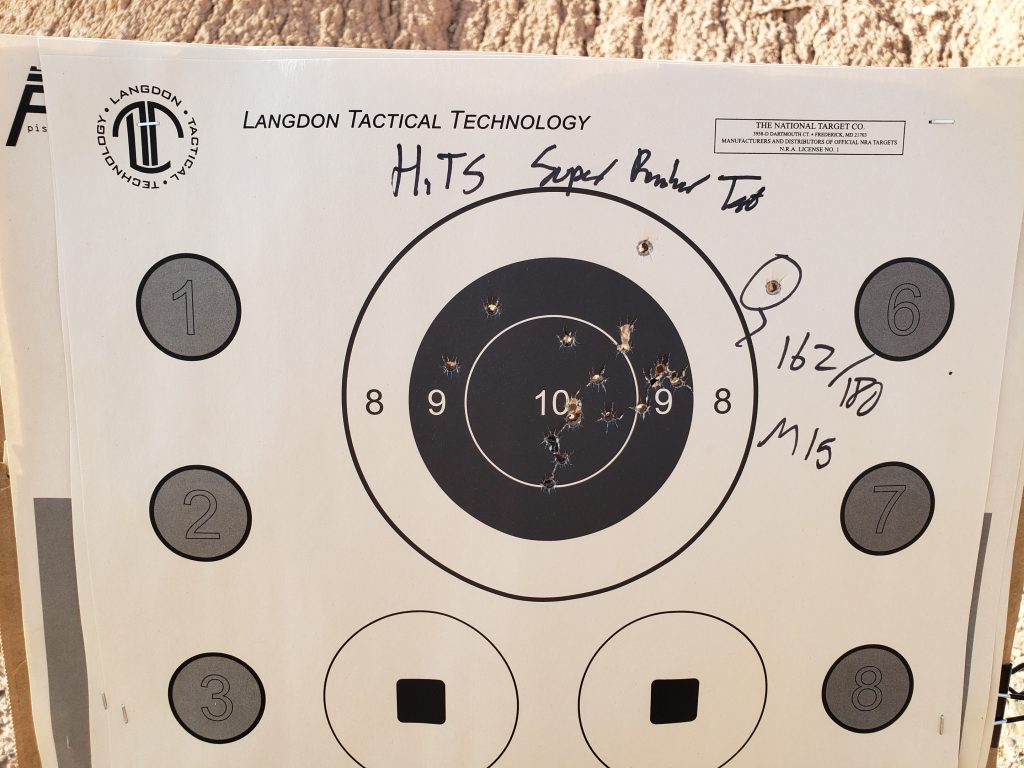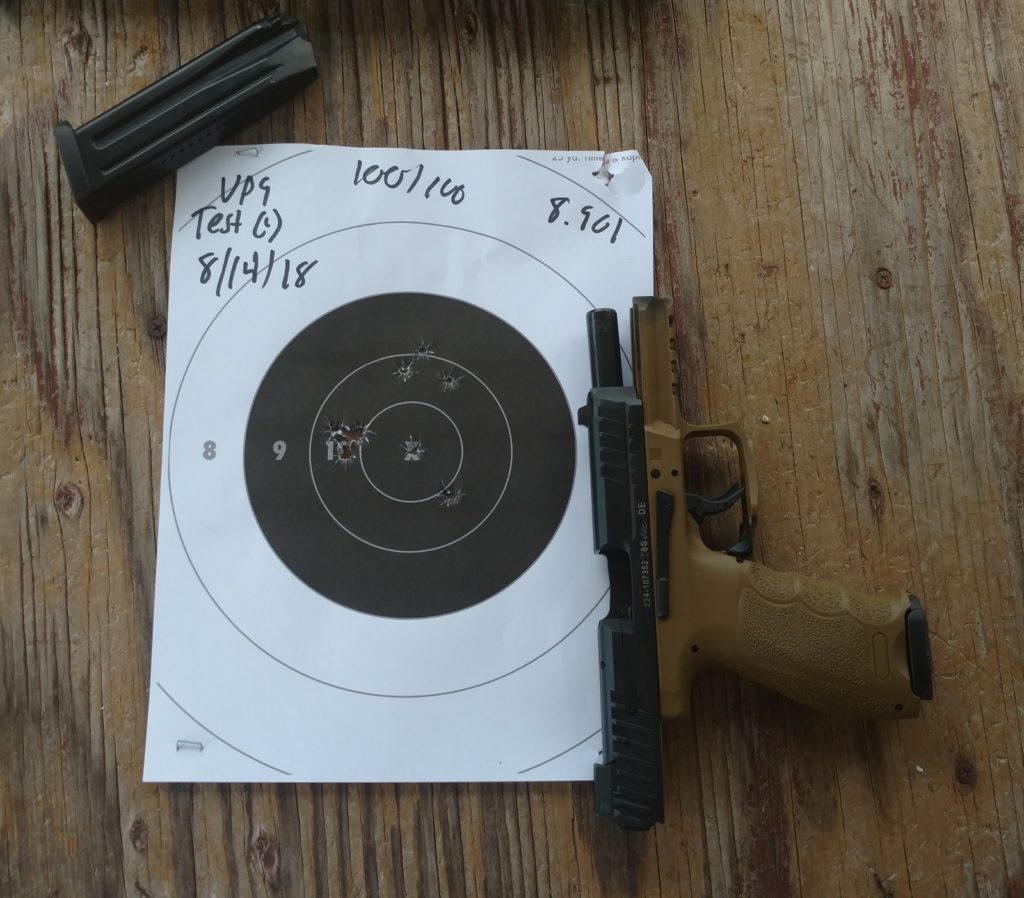
If you carry a gun, you likely know that it’s important to get both live and dry practice from your holster. Unfortunately, many ranges across the country prohibit shooters from drawing from their holster. Sometimes this is a restriction on certain positions, such as AIWB, and others are a flat ban on holsters in general. While this is a major hit to our training, it isn’t a death sentence. There are still some fantastic drills that don’t require a holster. Here are some of my favorites in this category.
Drills that Don’t Require a Holster to Shoot
The Werner 5×5
The Werner 5×5 was the first real drill that I worked on when becoming a more serious shooter. Up until this point I’d just shot generally at targets with no real time or accuracy standard. The drill is simple: 5 rounds, 5 seconds, into a 5-inch circle, at 5 yards. Repeat 5 times for consistency. It seems simple, but it trips more people up than you would expect.
Check out the The Werner 5×5 here
The Vickers Test
The next drill that I began working on was the Vicker’s Test. Also known simply as “The Test”, or in some circles as the “10x10x10”, this one steps things up a little bit. You’re shooting a B8 bullseye, with a par time of 10 seconds. Distance is 10 yards, round count is 10, with a passing score of 90%. A lot of folks rarely shoot past seven yards, and the relatively small size of a B8 make this a challenge for many. The Test is a great standard for growing shooters.
Check out The Vickers Test here
The Hardwired Tactical Super Test
Many years ago the folks at Hardwired Tactical took the Vickers Test and added their own touch to it. Now you must also shoot at 5 and 15 yards, both requiring 10 rounds, and their own unique par times. The Super Test is probably my favorite all-around test of general shooting skill. While it’s not completely comprehensive, it’s better than most and only costs 30 rounds.
Check out The Hardwired Tactical Super Test here
The Hardwired Tactical Super Snubby Test
The standard Super Test is largely designed around service sized pistols. Despite what internet bros will tell you, most people do not carry service sized pistols. This variant is designed specifically around snub nose revolvers and compact automatics. Much like the standard Super Test, this is my go-to for testing small handguns.
Check out the Hardwired Tactical Super Snubby Test
The Hardwired Tactical Super Revolver Test
I’m a revolver nerd, hopefully you are too. Much like gear, the training world has largely left revolvers behind. Luckily the Hardwired guys are revolver nerds too. As such, it’s only fitting that they’ve modified their Super Test to work with full size wheelguns.
Check out the Hardwired Tactical Super Revolver Test

Rangemaster Bullseye Course
Bullseye shooting is a bad word in much of the tactical community. However, that is a misguided opinion, as there’s always room for improvement in a variety of ways. The Rangemaster Bullseye Course was one that brought me a lot of benefit prepping for the Rangemaster Master Instructor Course.
Check out the Rangemaster Bullseye Course
Rangemaster Advanced Bullseye Course
Much like the previous test, this one works a variety of skills. From 5 to 25 yards, with tighter par times, you’ll likely be hard pressed with the Rangemaster Advanced Bullseye Course. Both this and the more simple version are great tests are well rounded checks of skill
Check out the Rangemaster Advanced Bullseye Course
Vickers 300
On paper, the Vickers 300 is one of the most simple courses of fire on this list. There are zero par times here, only an accuracy requirement. Shooters work two hands, strong, and weak handed at further distances than most people incorporate into their practice. The goal here is to simply improve every time. No pressure curiously creates pressure here, for me at least. A deceptively hard drill, the Vickers 300 is solid.
Check out the Vickers 300 here
Modifying Drills for use without a Holster
Don’t limit yourself to just these drills if your range prohibits drawing from the holster. You can still work on more “dynamic” skills, even with these restrictions. Take your average draw time, add that to your drill. Start from low ready or compressed ready like you’re building your grip before pressing the gun out. This is a technique that I use fairly regularly on restrictive ranges. Combine that with dry practice and you’ll be solid overall.
Wrapping Up Drills You Don’t Need a Holster to Shoot
Hopefully some of these drills can add benefit to your regular range plans. Most of these are staples of my training, and have helped me grow immensely as shooters. Cycling through a few of these over the course of the year should help you become a much more well rounded shooter.
Have you ever tried any of these drills or courses of fire? Are their any that we missed? Let us know in the comments!
Support My Work
If you made it this far, thanks for reading! Writing isn’t my full-time profession, and nearly everything I do comes out of my own pocket. Between ammunition, tuition, range fees and more, expenses add up fast. If you like what I have to offer, consider making a donation to my Patreon.
Every bit helps bring more work like this to you, and contributes to shortened timelines or more in-depth work on my part. You’ll also have more direct access to me, offering suggestions for future projects, looking behind the scenes, and getting early access to some content. You can find my Patreon >>HERE<<






Be the first to comment